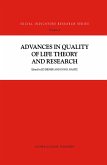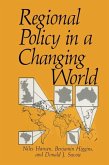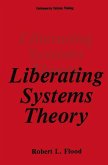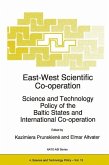Andere Kunden interessierten sich auch für
![Worlds Apart Worlds Apart]() R. L. DukesWorlds Apart81,99 €
R. L. DukesWorlds Apart81,99 €![Advances in Quality of Life Theory and Research Advances in Quality of Life Theory and Research]() E. Diener / D. Rahtz (eds.)Advances in Quality of Life Theory and Research81,99 €
E. Diener / D. Rahtz (eds.)Advances in Quality of Life Theory and Research81,99 €![Regional Policy in a Changing World Regional Policy in a Changing World]() Niles HansenRegional Policy in a Changing World161,99 €
Niles HansenRegional Policy in a Changing World161,99 €![Worlds of Work Worlds of Work]() Daniel B. Cornfield / Randy Hodson (Hgg.)Worlds of Work77,99 €
Daniel B. Cornfield / Randy Hodson (Hgg.)Worlds of Work77,99 €![Labor and Politics in the U.S. Postal Service Labor and Politics in the U.S. Postal Service]() Vern K. BaxterLabor and Politics in the U.S. Postal Service81,99 €
Vern K. BaxterLabor and Politics in the U.S. Postal Service81,99 €![Liberating Systems Theory Liberating Systems Theory]() Robert L. FloodLiberating Systems Theory121,99 €
Robert L. FloodLiberating Systems Theory121,99 €![East-West Scientific Co-operation East-West Scientific Co-operation]() Kazimiera Prunskiene (ed.) / Elmar AltvaterEast-West Scientific Co-operation81,99 €
Kazimiera Prunskiene (ed.) / Elmar AltvaterEast-West Scientific Co-operation81,99 €-
-
-
Produktdetails
- Theory and Decision Library A: 14
- Verlag: Springer / Springer Netherlands
- Artikelnr. des Verlages: 978-0-7923-0620-7
- 1990.
- Seitenzahl: 208
- Erscheinungstermin: 31. Januar 1990
- Englisch
- Abmessung: 241mm x 160mm x 16mm
- Gewicht: 472g
- ISBN-13: 9780792306207
- ISBN-10: 0792306201
- Artikelnr.: 21065546
Hinweis: Dieser Artikel kann nur an eine deutsche Lieferadresse ausgeliefert werden.
- Herstellerkennzeichnung Die Herstellerinformationen sind derzeit nicht verfügbar.
One - Gamed Simulations for Social Scientists.- Gaming in the College Classroom.- Scientific Gaming.- Gamed Simulation.- Social Science Research with Gamed Simulations.- Games Versus Real Life.- The Industrial Revolution.- Starpower.- Research Design.- Stratification in Agrarian and Industrial Society Contrasted.- Findings About Conflict and Change.- What is a Gamed Simulation?.- Simulation.- Gamed Simulations.- two - History of Gamed Simulation in Social Science Research.- Inter-Nation Simulation (INS).- Simsoc (Simulated Society).- Starpower.- High School.- Generation Gap.- The Commons Game.- Conclusion.- three - Theory.- Social Structure.- Open and Closed Social Systems.- Implications of Social Structure for Empirical Predictions Concerning Play of Starpower.- Status Characteristics.- The Intergroup Association Block.- The Formation of Interests and Perceptions.- Group Size and the Organization of Interest Groups.- The Second Round.- Rule Change Portion of the Game and Class Conflict.- Mobilization.- Group Interaction.- Rule Changes.- Elite Theory.- Law.- Repression.- Collective Action.- The Results of Repression and Collective Action.- Four - History and Rules of Starpower.- History.- How Starpower is Played.- Transcript of a Play of Starpower.- Five - Operationalization of Concepts of the Theory Model.- The Social Structural Block: Manipulated Variables.- Variables of the Status Characteristics Block.- Round 2.- The Rule Change Portion of the Game.- Round 3.- Six - Hypotheses to be Tested in the Starpower Simulation.- Components of the Theoretical Model.- Round 2.- The End of Round 2.- The Rule Change Portion of the Game.- Round 3.- Summary of the Hypotheses.- Seven - Research Procedures.- The Classroom Groups.- Player Characteristics.- Size ofSocieties.- Size of Social Classes.- Late Arriving Players.- Starpower and the Sociology and Social Anthropology Curriculum.- Game Administration.- Identification Tags.- Player's Logs.- Timing of Rounds.- Standardized Bonus Rounds.- Round 3.- Rule Changes.- Collective Action.- Debriefing.- Summary.- Eight - Qualitative Analysis of Starpower.- The Day We Played Starpower: Observations by a Fictitious Player.- Group Bonus.- Motility.- Rule Changes.- Collective Action.- Comments by Players.- Summary of the Observations.- Nine - Findings from the Quantitative Analysis of Collective Action in Starpower.- Round 1.- Round 2.- Transition Period at the end of Round 2.- Rule Changes.- Verbal Interactions.- Collective Action.- Round 3.- Summary of Data Analysis.- Afterword.- Appendix a - Sample Scoresheet.- References.
One - Gamed Simulations for Social Scientists.- Gaming in the College Classroom.- Scientific Gaming.- Gamed Simulation.- Social Science Research with Gamed Simulations.- Games Versus Real Life.- The Industrial Revolution.- Starpower.- Research Design.- Stratification in Agrarian and Industrial Society Contrasted.- Findings About Conflict and Change.- What is a Gamed Simulation?.- Simulation.- Gamed Simulations.- two - History of Gamed Simulation in Social Science Research.- Inter-Nation Simulation (INS).- Simsoc (Simulated Society).- Starpower.- High School.- Generation Gap.- The Commons Game.- Conclusion.- three - Theory.- Social Structure.- Open and Closed Social Systems.- Implications of Social Structure for Empirical Predictions Concerning Play of Starpower.- Status Characteristics.- The Intergroup Association Block.- The Formation of Interests and Perceptions.- Group Size and the Organization of Interest Groups.- The Second Round.- Rule Change Portion of the Game and Class Conflict.- Mobilization.- Group Interaction.- Rule Changes.- Elite Theory.- Law.- Repression.- Collective Action.- The Results of Repression and Collective Action.- Four - History and Rules of Starpower.- History.- How Starpower is Played.- Transcript of a Play of Starpower.- Five - Operationalization of Concepts of the Theory Model.- The Social Structural Block: Manipulated Variables.- Variables of the Status Characteristics Block.- Round 2.- The Rule Change Portion of the Game.- Round 3.- Six - Hypotheses to be Tested in the Starpower Simulation.- Components of the Theoretical Model.- Round 2.- The End of Round 2.- The Rule Change Portion of the Game.- Round 3.- Summary of the Hypotheses.- Seven - Research Procedures.- The Classroom Groups.- Player Characteristics.- Size ofSocieties.- Size of Social Classes.- Late Arriving Players.- Starpower and the Sociology and Social Anthropology Curriculum.- Game Administration.- Identification Tags.- Player's Logs.- Timing of Rounds.- Standardized Bonus Rounds.- Round 3.- Rule Changes.- Collective Action.- Debriefing.- Summary.- Eight - Qualitative Analysis of Starpower.- The Day We Played Starpower: Observations by a Fictitious Player.- Group Bonus.- Motility.- Rule Changes.- Collective Action.- Comments by Players.- Summary of the Observations.- Nine - Findings from the Quantitative Analysis of Collective Action in Starpower.- Round 1.- Round 2.- Transition Period at the end of Round 2.- Rule Changes.- Verbal Interactions.- Collective Action.- Round 3.- Summary of Data Analysis.- Afterword.- Appendix a - Sample Scoresheet.- References.








